#20 in Vietnam
Popular Cá Kho Variations
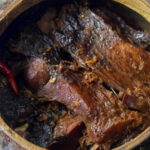
Cá Kho Làng Vũ Đại
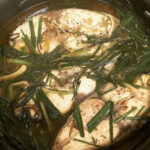
Cá Cấn Kho Lá Nén
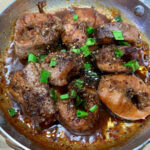
Cá Kho Tiêu
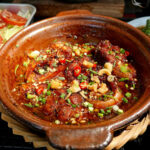
Cá Kho Tộ
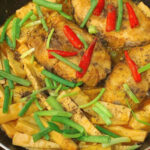
Cá Kho Măng

Cá Kho Nghệ
Cá Kho: Ingredients and Preparation
Main Ingredients
Main Cooking Method
Preparation Process
Cá Kho: A Deep Dive
Cultural Significance
Taste
Texture
Aroma
Color
Serving Style
Serving Temperature
Accompaniment
Occasions
Seasons
Special Diets
Calories
Popularity
Popular Similar Dishes
- Thịt Kho
- Assam Pedas
- Hong Shao Yu
- Godeungeo-jorim
Popular Dining Area
Cá kho is a traditional Vietnamese dish that primarily involves fish that has been braised in a rich, savory sauce.
The sauce typically features a combination of Vietnamese caramelized sauce, fish sauce, and various seasonings, giving the dish a distinctive sweet, salty, and umami flavor profile.
Commonly used fish in cá kho include catfish or snakehead, although other varieties can be used as well.
The fish is slowly cooked until tender, absorbing the flavors of the sauce. Cá kho is often served with steamed rice and is known for its deep, complex flavors.
Let me walk you through all the features of this dish, its components, its notable versions, its benefits and drawbacks, common queries, and comparable meals.
Key Points
Cá Kho Images
What Are Common Cá Kho Ingredients?
Cá Kho, a traditional Vietnamese dish known for its rich and savory flavors, typically includes the following common ingredients:
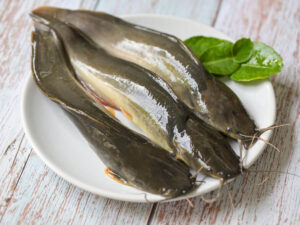
Fish
For cá kho, catfish or snakehead fish are ideal, usually bought whole and cut into steaks.
Alternatives include basa, cod, halibut, swai, mahi mahi, snapper, tilapia, etc. Fillets can also be used but need careful cooking to avoid breaking apart.

Sauce
Fish sauce, Vietnamese caramel sauce
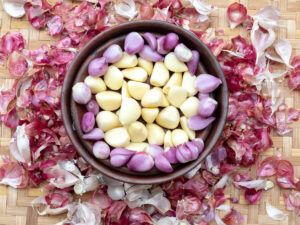
Seasonings
Shallots, ginger, black pepper

Garnish
Green onions, fresh chili
With these key ingredients, cooks can create a plethora of cá kho variations, each offering a unique twist on this classic Vietnamese culinary delight.
What Are Well-known Variations of Cá Kho?
Each variation of “cá kho” offers a unique taste and texture, influenced by the local ingredients and culinary traditions of different regions in Vietnam. Here’s a breakdown:
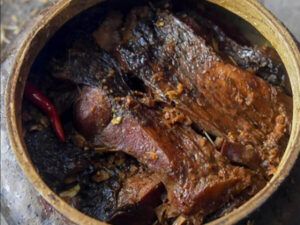
Cá Kho Làng Vũ Đại
This is a renowned version from Vũ Đại village, typically made with black carp or grass carp, cooked in a specific clay pot with traditional spices like riềng (galangal) and ginger, over longan wood fire.
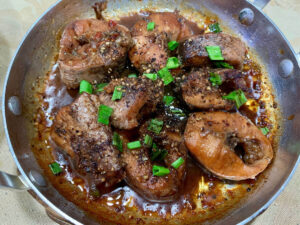
Cá Kho Tiêu
Fish braised with pepper, known for its spicy and aromatic taste.

Cá Kho Măng
This dish includes fish braised with bamboo shoots, offering a crunchy texture and a mild, earthy flavor.
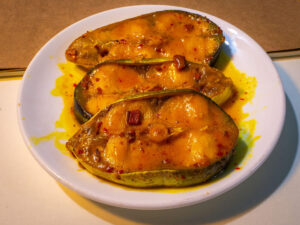
Cá Kho Nghệ
Fish braised with turmeric, providing a vibrant color and a warm, bitter taste.
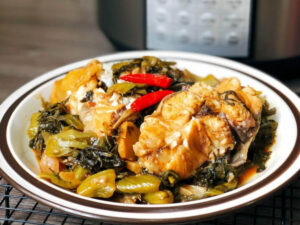
Cá Kho Dưa Chua
Fish braised with pickled mustard greens, lending a tangy and slightly sour taste to the dish.
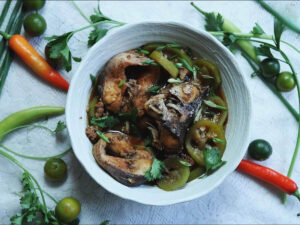
Cá Kho Bầu
In this version, fish is braised with bottle gourd, which adds a mild, sweet flavor and a soft texture.
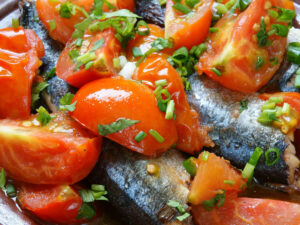
Cá Kho Cà
Fish braised with tomatoes, creating a dish that’s tangy and savory with a rich tomato sauce.
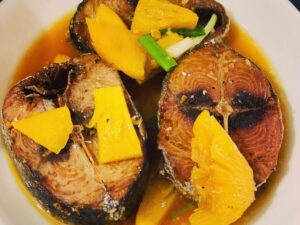
Cá Kho Dứa
This variation features fish braised with pineapple, giving the dish a sweet and tangy flavor profile.

Cá Kho Củ Cải Trắng
Fish braised with white radish, which contributes a mild, slightly sweet flavor and a crunchy texture.
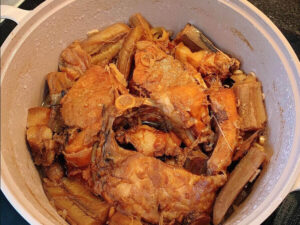
Cá Kho Chuối Xanh
A unique combination where fish is braised with green bananas, offering a starchy texture and a mild flavor.

Cá Kho Mắm
In this version, fish is braised with fermented fish, adding a rich umami and salty flavor.
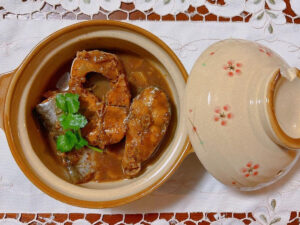
Cá Kho Tương Bần
Fish braised with tương Bần (a traditional Vietnamese fermented soybean paste), resulting in a savory and slightly sweet dish.

Cá Kho Chay
A vegetarian version of cá kho, often using tofu or mock fish with the same rich, savory braising sauce as traditional cá kho.
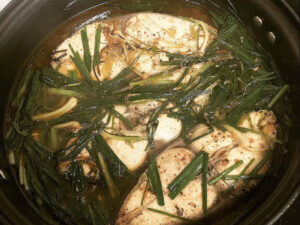
Cá Cấn Kho Lá Nén
A Central Vietnamese dish featuring small river fish braised with fresh turmeric, nén leaves, and other spices, known for its unique, aromatic flavor.
It’s clear that each cá kho variation brings its own unique blend of tastes and textures, reflecting the rich culinary landscape of Vietnam; however, it’s also important to weigh the pros and cons of cá kho.
Pros and Cons of Eating Cá Kho
Cá kho has several pros and cons that should not be missed:
Pros
Cons
Furthermore, don’t overlook the frequently asked questions about cá kho.





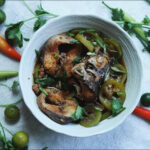
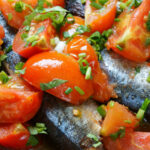




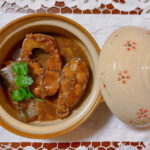
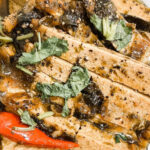

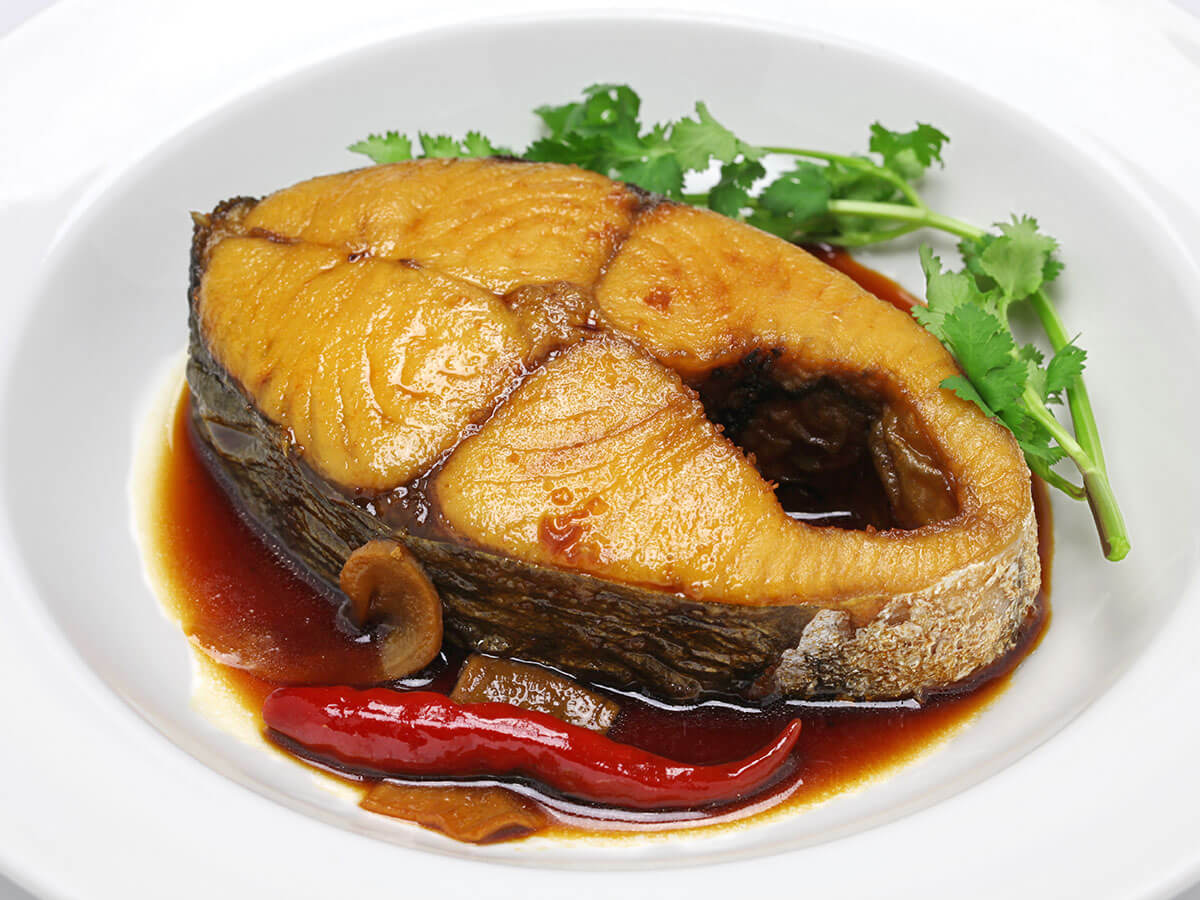

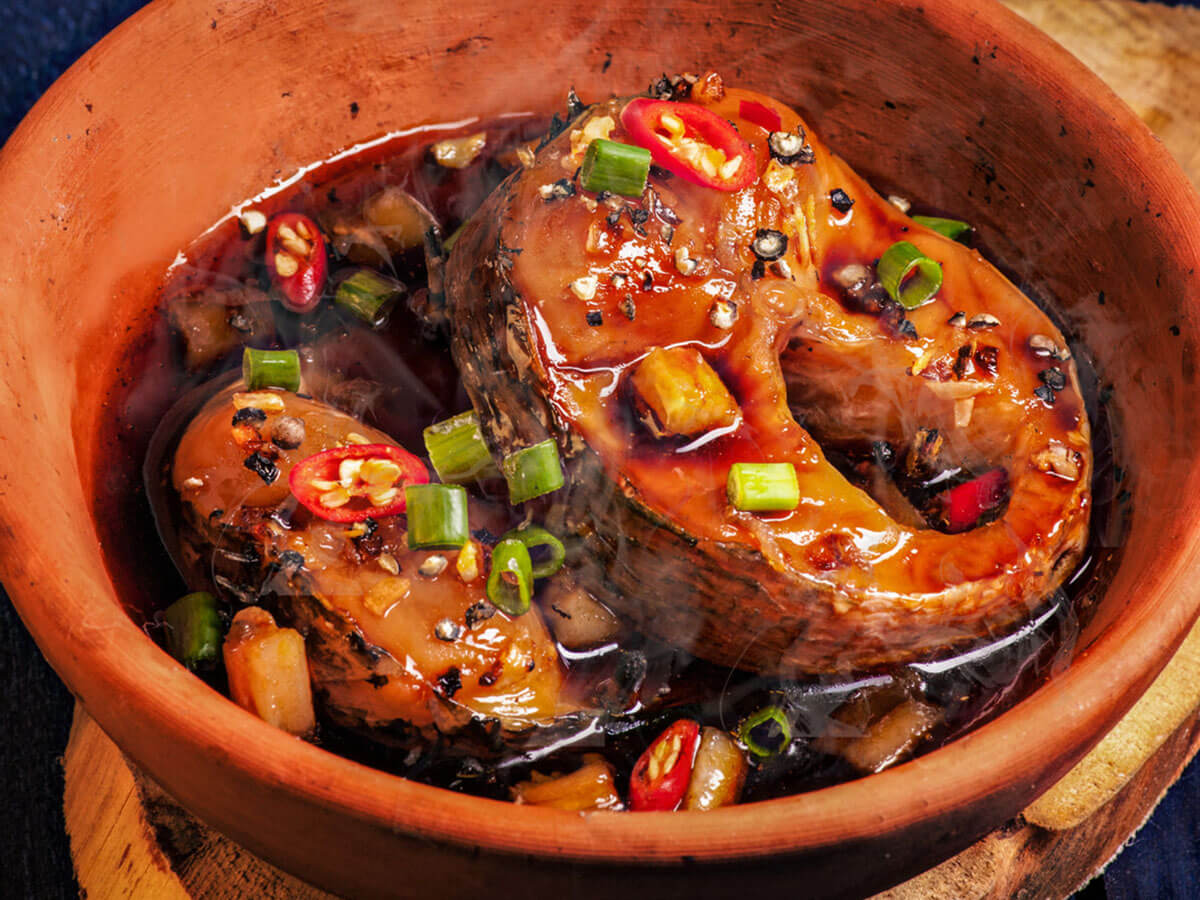

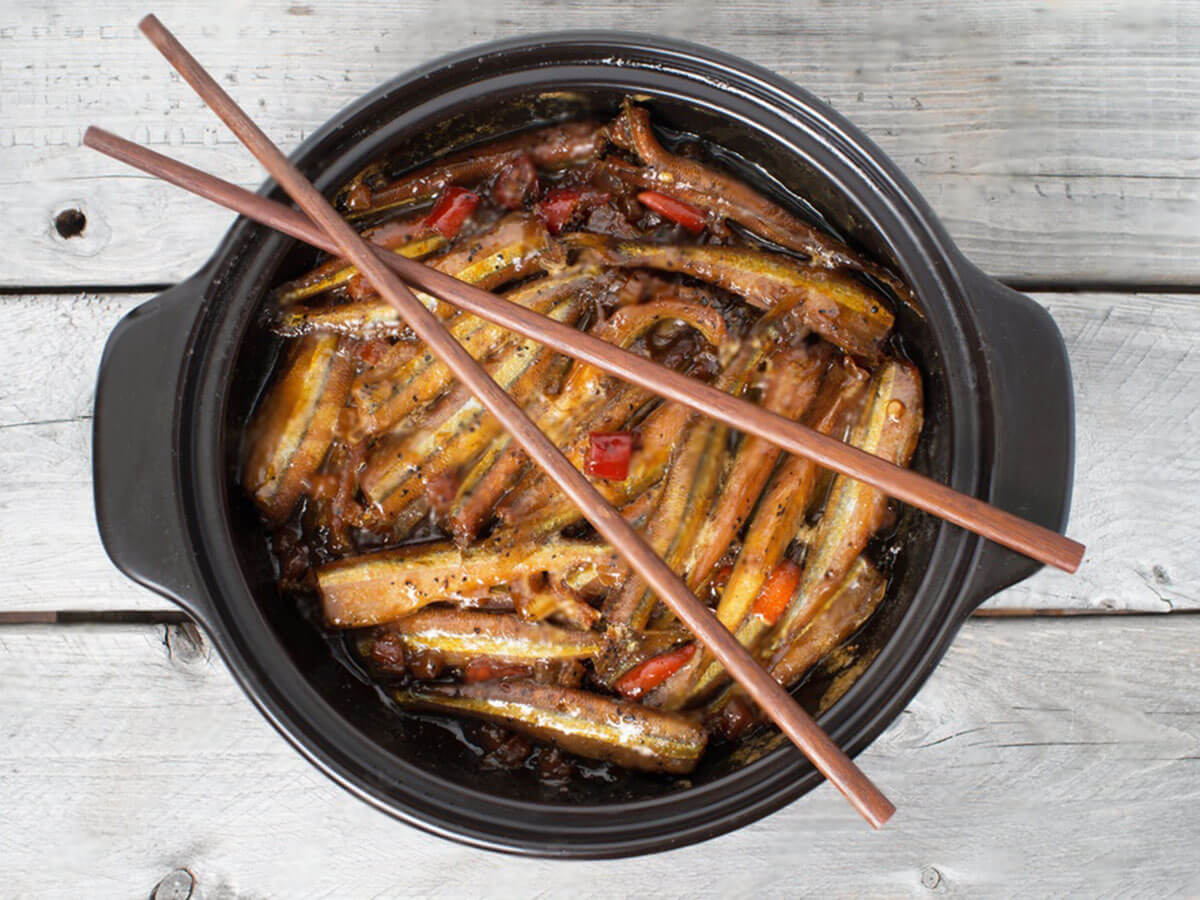



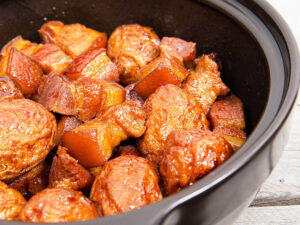
Truc Tran (Kris)
Senior Food Editor
Expertise
Home Cooking, Meal Planning, Recipe Development, Baking and Pastry, Food Editor, Cooking-video Maker, Vietnamese Food Evaluation Expert
Education
Truc Tran (Kris), an experienced food writer and editor, is great at exploring and describing global cuisines, from simple street food to fancy dining. In her writing, she skillfully mixes different flavors, cooking methods, and culinary traditions, showing the unique character of various cultures through their food and drinks. On azcuisines.com, Kris highlights her knowledge, especially in Asian cuisine and worldwide traditional dishes.